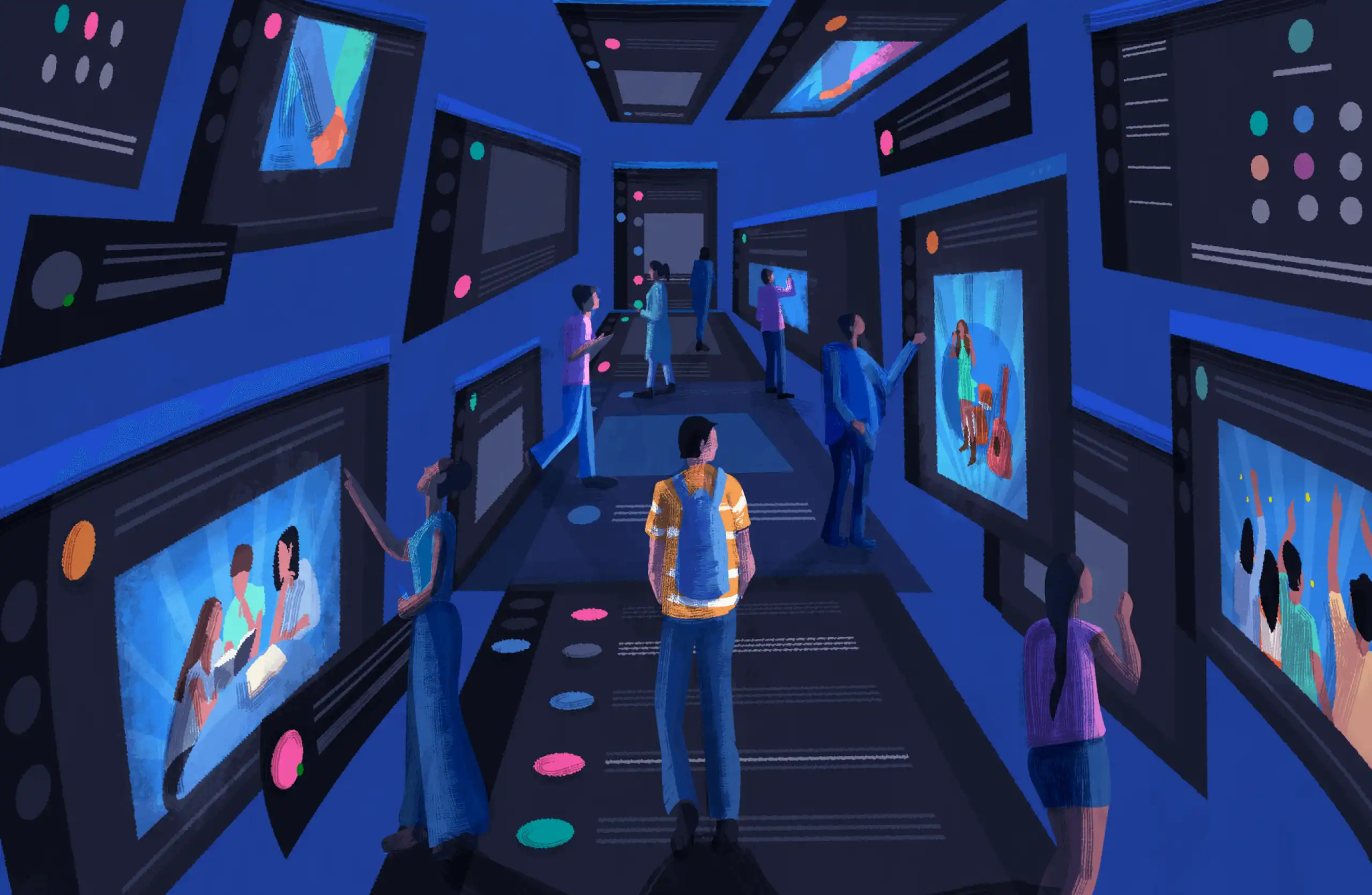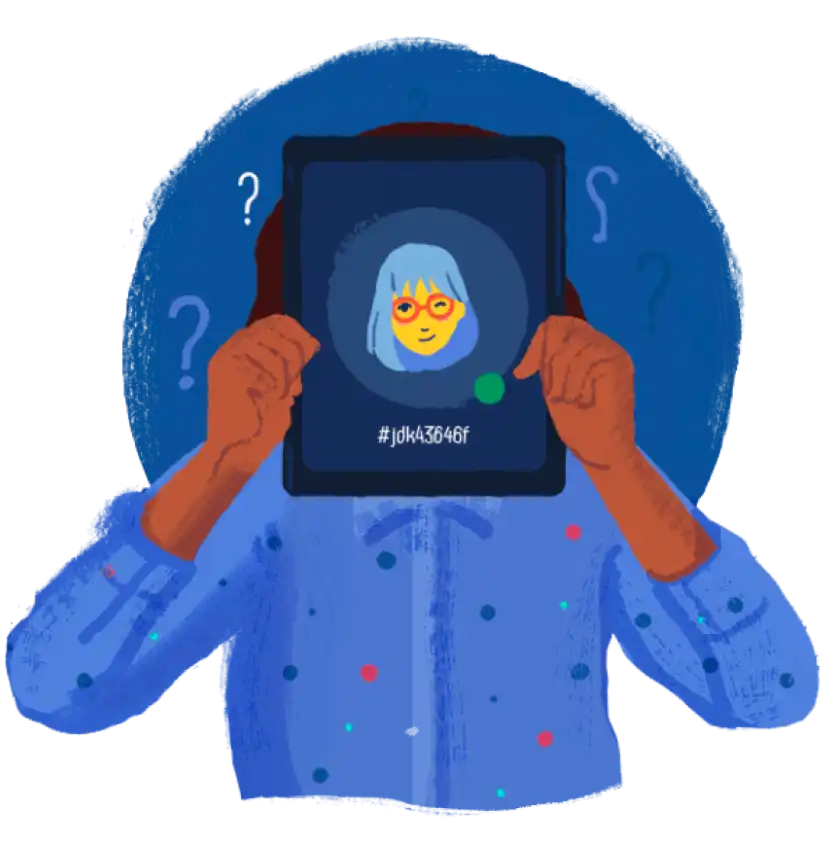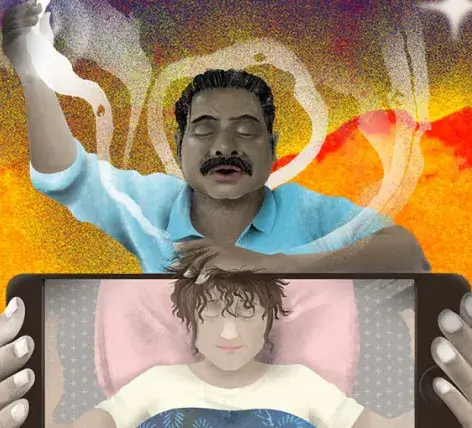Sixteen-year-old Ashmita (name changed) has had a very difficult year. Buffeted by social anxiety and fear of failure but unable to make her family understand her problems, she had to cry herself to sleep every other night. The COVID19 lockdowns and restrictions ended physical meetings with her peers. A ligament injury in her ankle left her almost bedridden and unable to play badminton, a sport that used to be an outlet for her. Being stuck indoors for months did not help.
“You see everywhere people your age are accomplishing so much, and I’m sitting here having a hard time coping with school and life in general,” says Ashmita sobbing in a voice note, the only form of communication she prefers. “There are so many times I didn’t wanna stay alive.”
Last month when her smartphone dinged with a notification about an online session with qualified psychotherapist Shanaya Boyce on a Discord server, Ashmita joined with close to a hundred others. In the public group chat, teens like her shed inhibitions and spoke about dealing with loneliness, insecurity, confusion, and suicidal tendencies, while Boyce answered these questions over a voice channel accessible to all listeners.
“More than anything else, it helped me tremendously to know I am not alone,” says Ashmita. The session also made her realise that her problems were real and that she needed psychotherapy to deal with them.
Ashmita has Discord to thank for helping her find the resources that became her lifeline when she needed them the most. A chat platform that allows communities of teens with similar interests to hang out virtually, Discord started out as a place for gamers to chat but has gone mainstream with teens and the young since April-May 2020.
Ashmita says that even though she hasn’t been able to find the courage to open up to a therapist about her problems, she is finding strength in confiding in her sister, something she had a hard time doing earlier. “Earlier, I didn’t even know if my problems were valid,” she says.
Knowing that she’s not alone and hearing about people navigating through their own mental health battles and their healing journeys on Discord has helped her in the past few months.
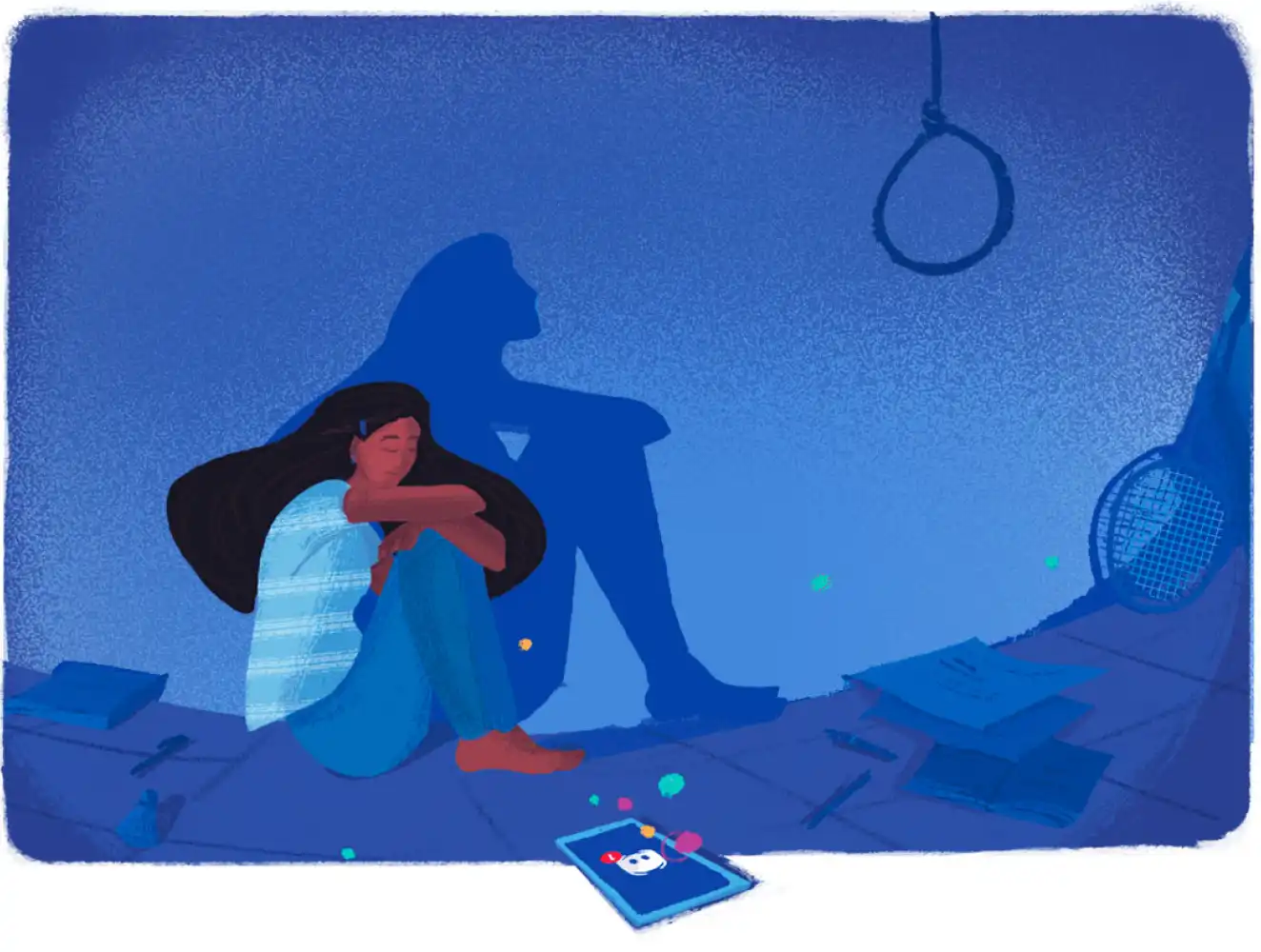
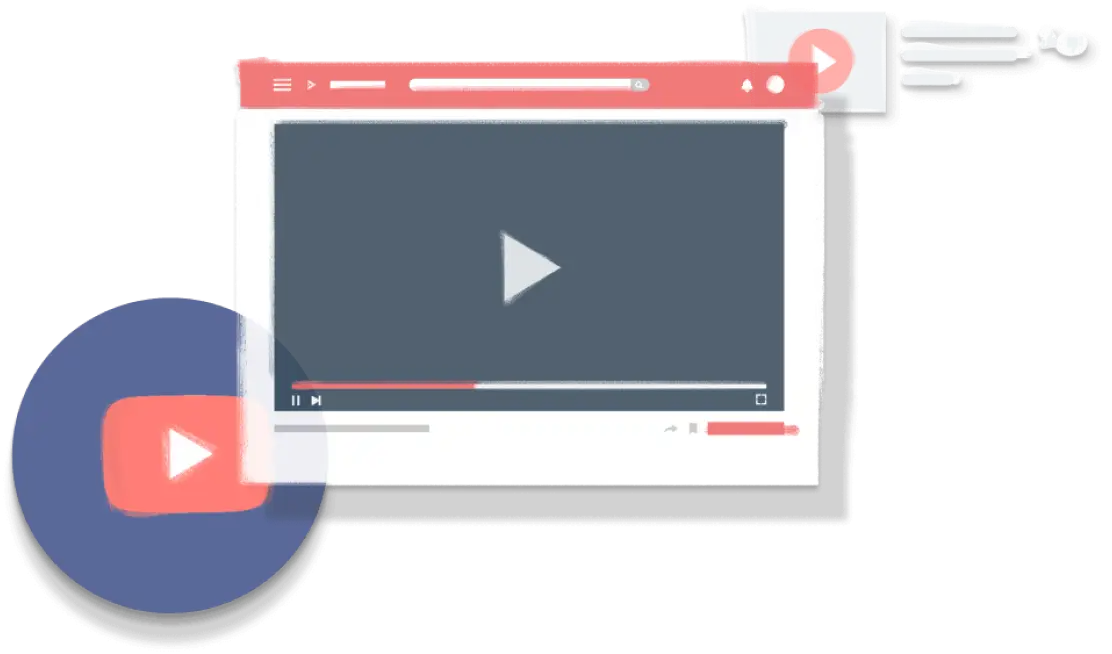
Headquartered in San Francisco and founded in 2015, Discord is a platform that allows users to build and engage with like-minded members through chat, voice and video channels. Discord’s Indian members soared after mid-2020 when the first COVID19 lockdown forced students to spend more time online. Some were introduced to it by their gamer friends. Also, artists such as Tanmay Bhat started pushing their audience to their Discord servers around the same time.
At the beginning of 2021, Mumbai-based singer and musician Avanti Nagral released her new single Sun toh Lo, a song that highlights Indian society’s dismissive attitude towards the mental health troubles of teenagers. The song hit a nerve. Young people flooded the comment section of her YouTube video with their experiences of loneliness and depression.
Soon Nagral started seeing these conversations moving to her Discord server. Discord’s community-building tool has attracted internet artists and creators globally to set up Discord servers as a hangout for their followers. A professional musician who has been a performing artist since she was four, Nagral, 24, has a dual degree from Harvard University and the Berklee School of Music, Boston. She spent the first seven years of her life in the US before her parents moved to Mumbai a little over a decade ago. She has also garnered a large following on YouTube and Instagram in the last few years, making music, education, and mental health content. Nagral has also produced many music albums.
Taking these conversations around mental health challenges as a cue, Nagral’s team sprang into action. It started holding events and sessions to make these conversations more meaningful and effective. The session with Boyce that Ashmita joined was hosted on Nagral’s server. Boyce has a master’s degree in clinical psychology and is a practising trauma-informed and queer affirmative therapist. In another freewheeling chat held on Nagral’s Discord server with therapist Prachi Bhatia, a common question troubling most of these young folks seemed to be—How do I convince my parents that I need therapy?

“There’s a huge gap when it comes to having safe spaces for young folks to talk about things openly,” says Nagral, whose content around music and college education has found an audience among teenagers. Whether the questions are around mental health, sexuality, dealing with everyday life, career prospects or just general loneliness, Nagral, whose Harvard degree is in psychology, says that she found her audience having these discussions on her Discord server. Her server has also been a place for discussions on studying abroad, exploring new music artists and holding debates on socially relevant topics.

“The fact that people were finding a safe space on the internet–something they can’t find at home–made me realise the power of the community we were building,” says Nagral.
Amaan (name changed), also a member of the Nagral’s server on Discord, opened up about struggling with anxiety and depression. People in the server, including Nagral herself, connected him with a list of therapists who could help him out. A first-year business administration student from West Bengal, Amaan joined Discord in July 2020 when a cousin introduced him to the platform to hang out virtually. As a participant of some other music servers on Discord apart from Nagral’s, Amaan says that the community on these servers is very warm and accepting of different people. “From day one, it felt like a room where people understood each other,” says Amaan, adding that the anonymity aspect of the platform definitely helps.
Amaan, who joined Discord at a very low point in his life, is thankful to the people on Discord who helped him on his healing journey. “After speaking to countless counsellors and therapists, I gathered the courage to speak to my parents about my struggles with depression,” he said, adding that he’s doing much better overall.
# What is Discord and why do teens love it
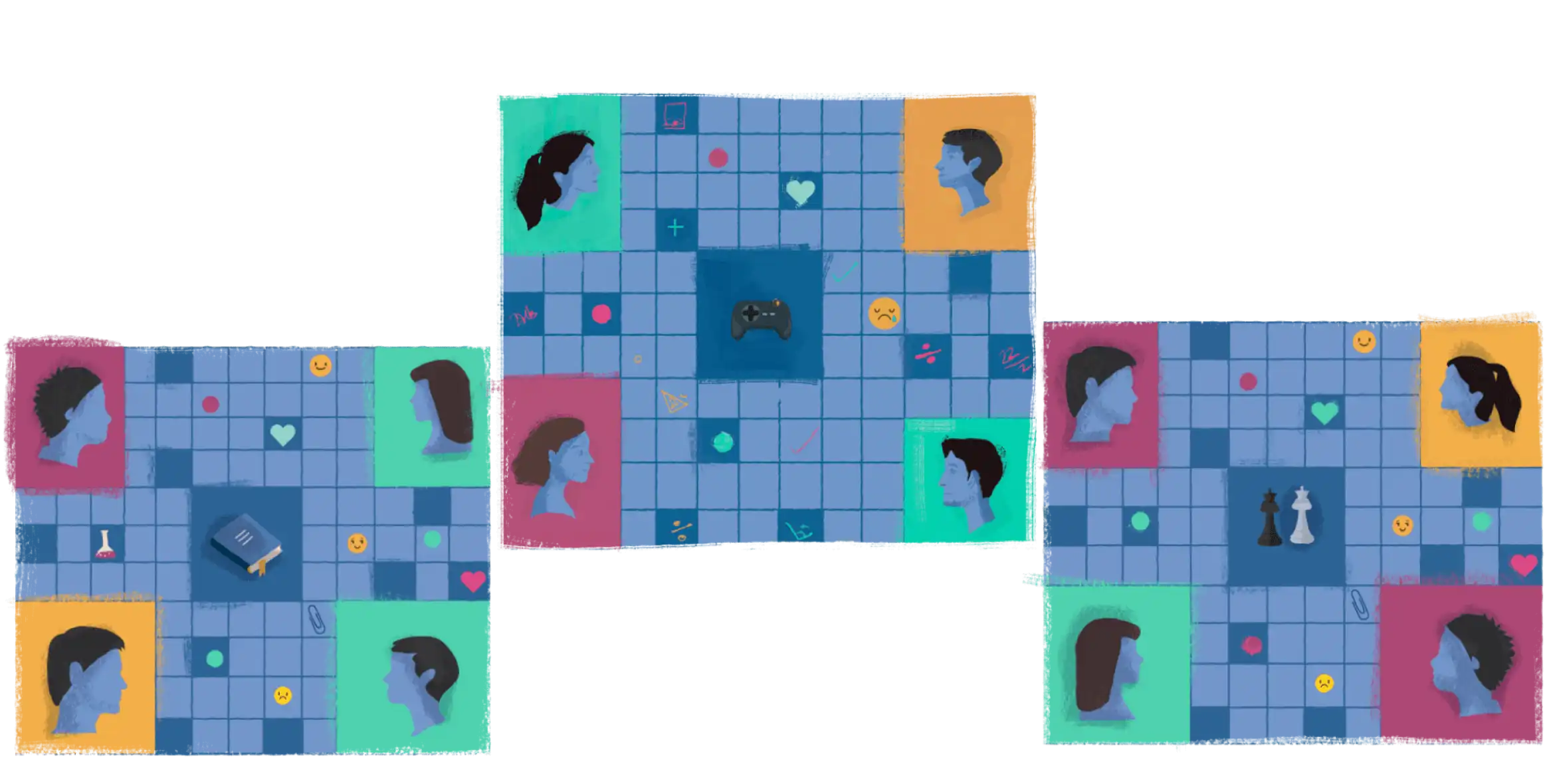

It’s highly unlikely you’ve heard of Discord unless you are a hardcore gamer, an urban teenager (or the parent of one) or a super fan of a YouTuber or artist who redirects their audience to their Discord server.
A quick poll across three popular Indian servers on Discord gave out the demographics of the users there. While most users in these servers are from Mumbai, Delhi, Bengaluru, Chennai, Pune and Kolkata, there are users from other lower-tier cities such as Lucknow, Indore, Bhopal, Ujjain, Jodhpur, Hathras, Guntur, Patna, Sonipat, Kochi, Ludhiana, Bhubaneswar, Palakkad, Ranchi, Salem, Kolhapur and Aurangabad, among others. Most users spend around two to four hours on the platform and are 14-20 years old.
The AvanTribe, Nagral’s server on Discord, which has over 10,000 active members, is a portal to a much larger corner of the Internet that is inhabited mostly by urban and semi-urban Indian teens spending hours every day on the platform—helping a user with the atomic mass of carbon during a parallel online exam, sharing their poetry or a song they wrote after a recent heartbreak, asking for help in a difficult trigonometry problem, discussing career choices in the humanities, exploring scholarship opportunities to study in Harvard, participating in debates, asking questions to queer therapists or venting about their frustrations regarding gender dysphoria, sexuality and individuality. Have Indian teens then found a platform for their social and emotional needs?
“Unfortunately, a lot of people don’t take a teenager’s struggles seriously,” says Nagral. Especially during the past year and a half, teenagers whose adult-free socialising was limited to schools and colleges have had a hard time finding an outlet for their emotional needs. Seeking therapy for mental health distress has largely been a western concept for most Indians. But the lasting effect of the pandemic has increased awareness and demand for therapy in the past one and a half years.
Many Discord servers inhabited by Indian teens have a channel in which they can vent their feelings—a forum filled with users talking their hearts out over hundreds of messages.
Spending a few minutes on some of these servers makes it apparent that these teens, who know each other only by their pseudonyms, find this space to be a judgement-free zone and talk about everything, including toxic relationships, gender dysphoria and suicidal thoughts and are almost always met with kindness and empathy in return.
For teenagers, spending time with their friends is very important. But while they can still socialise online, it’s not the same for many of them, says Divija Bhasin, a counselling psychologist with a master’s in clinical psychology.
“Many teenagers might feel stuck with their family, especially in cases where they feel that their parents don’t give them space,” says Bhasin. For many teenagers, going out of the house is a way to escape from dysfunctional or toxic families. The pandemic has shut this escape hatch.
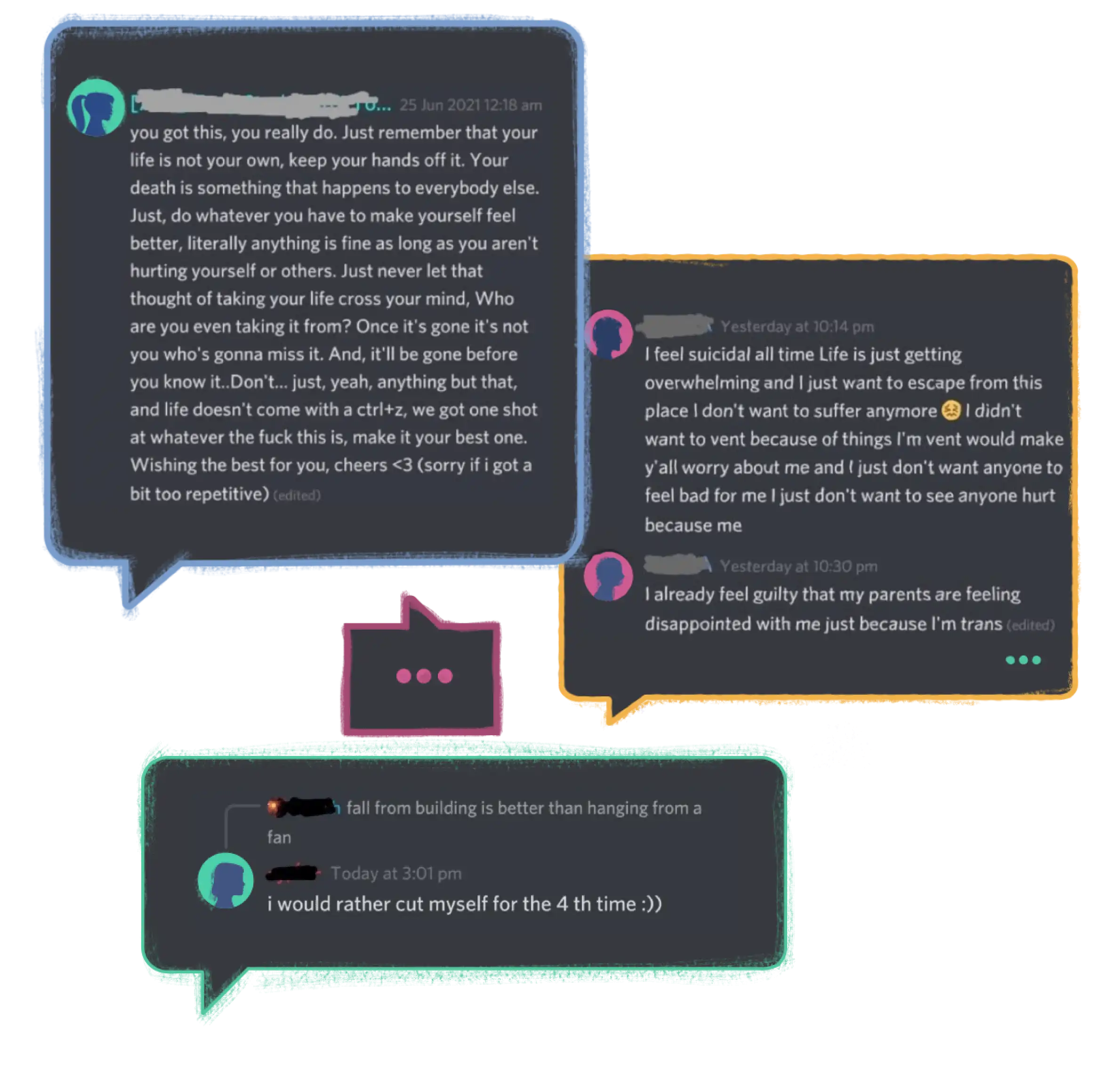
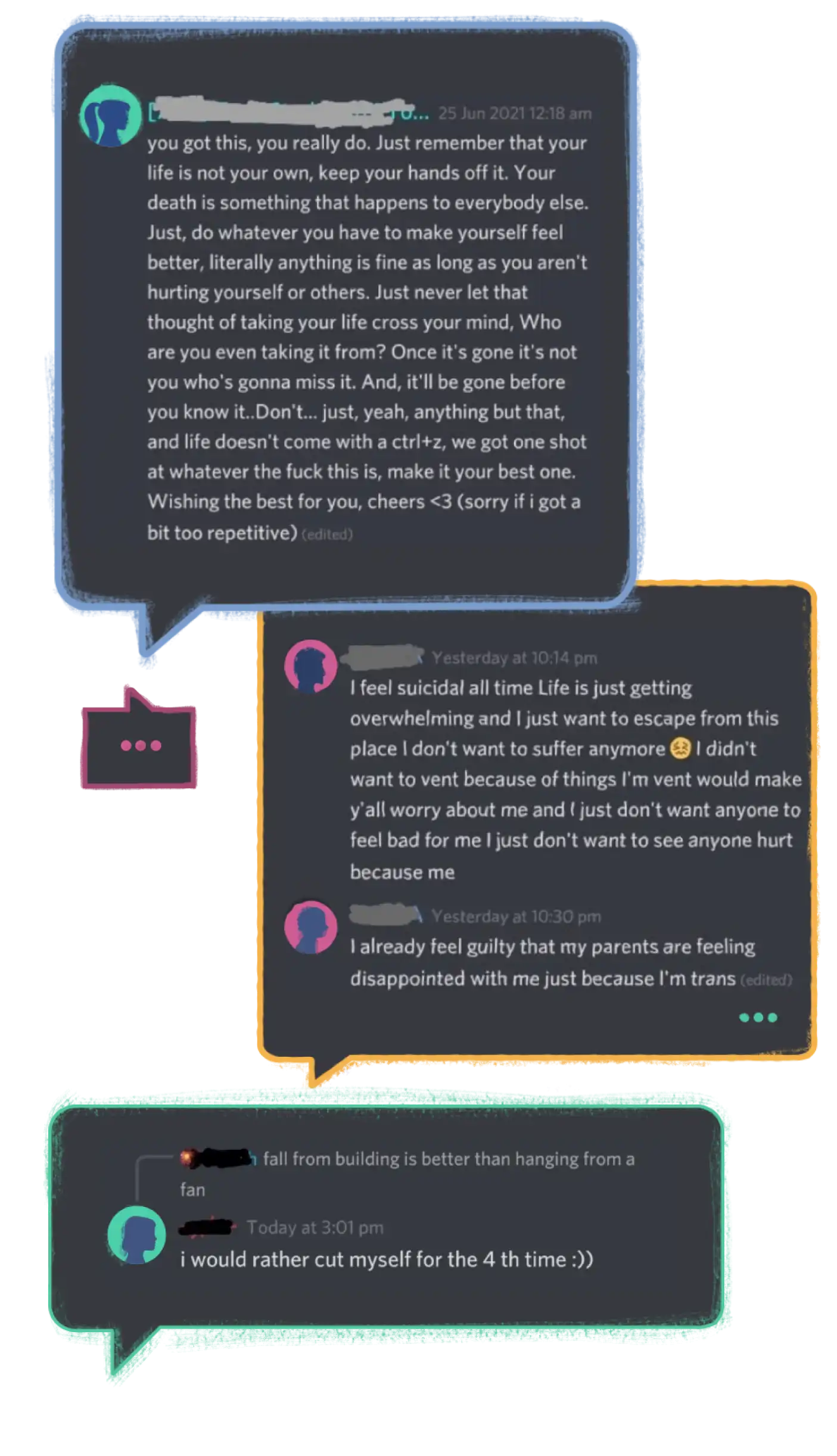
For many of these users, though, peer support isn’t why they came to Discord in the first place. While some took to Discord to connect with their gaming friends, others followed their favourite content creators, who were encouraging their followers to sign up on Discord.
Tenth grader Shreyas Adsul from Presidency School Bangalore set up a Discord server when the school moved online last year. Setting up a Discord server is like starting a community page on a social media platform. The server creator gets to set the rules on the server, whether a public or private server and set up admins to moderate the discussions on the server.
“Most students in my school are active on Discord. We had several groups projects and assignments with short deadlines, and Discord seemed to be the best way to collaborate with large groups because of features like voice channels and streaming,” says Adsul. He adds that he’s also found a bunch of supportive friends in the Discord communities.
Apart from self-expression and socialising, teens also use the platform for networking and working up a good resume for their future.
Last year, Sriya Mahapatra, an eighth grader from Ranchi, was gearing up for what looked like a terrible year in school, with the lockdown spelling the end of all co-curricular activities. Instead, in the past year and a half, she’s published her own fiction novel, started a podcast and is working with a non-profit organisation—all thanks to the pandemic and the networking she’s been doing on Discord.
“I’ve made more than a thousand connections on Discord, out of which I speak to around a hundred people daily,” says Mahapatra. The community she’s found on Discord has helped her fill the social lacuna created by the pandemic.
# The community aspect and feeling of belongingness
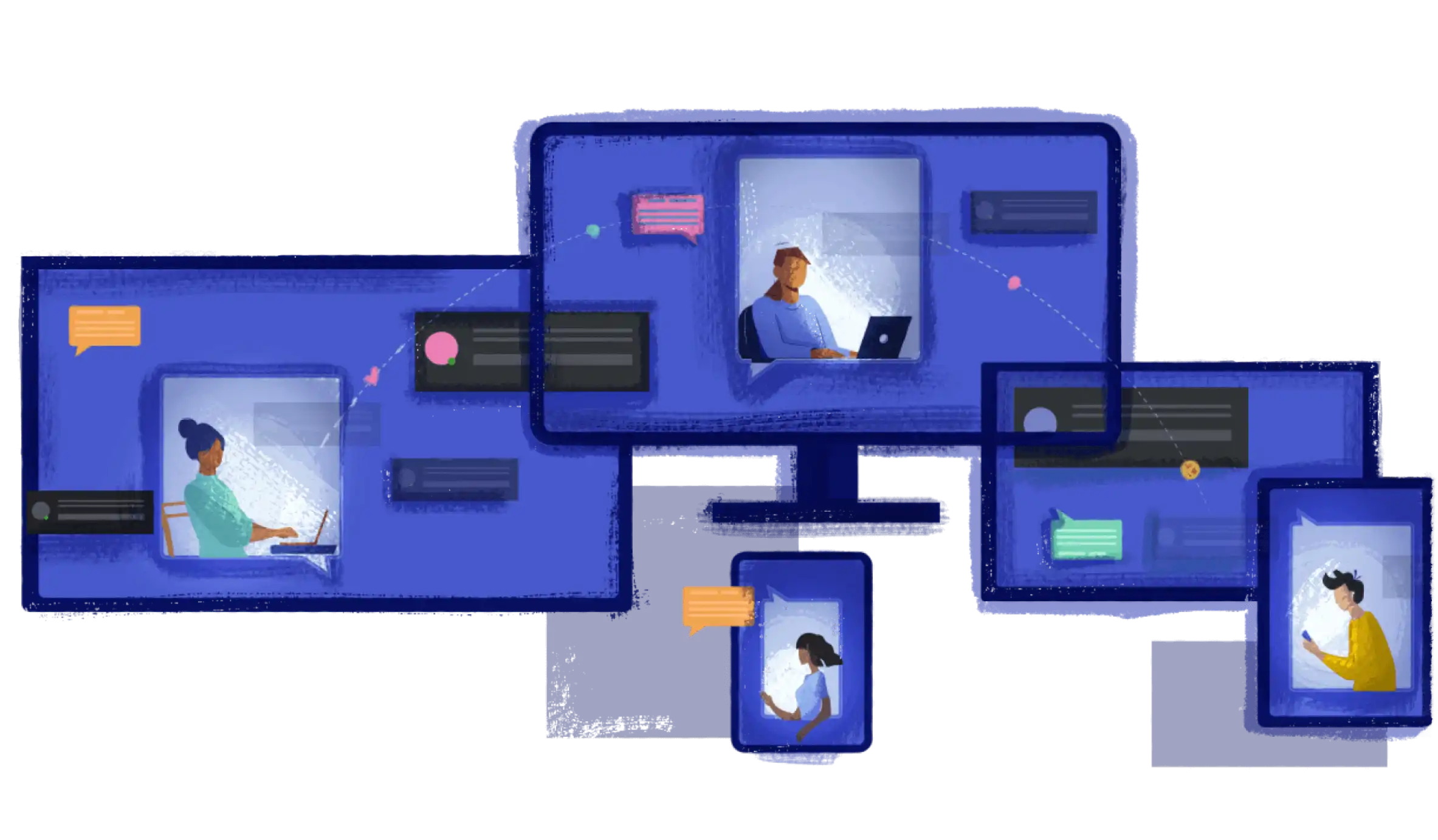
Started out popularly as a place for gamers to hang out, play together, play or stream their gameplay, Discord has evolved in India as a space for teens to connect, socialise and vent over the past year and a half. This phenomenon, which became more global than local, prompted Discord to rebrand itself to shed the “gamers only” image to a more inclusive social communities brand. The company made changes in the software to make it less intimidating for the non-gamers community, like easier onboarding of new users and increased voice and video capacity.
Although the platform requires users to be above 13 years of age to sign up, it’s not uncommon to find kids 9-12 years old spending hours on the platform. Due to the popularity of games like Fortnite, which has a strong teen and pre-teen userbase, Discord witnessed a surge in its teenage user base.
The Discord app—the software can also be downloaded on PCs—allows users to make servers where people with common interests come together and interact through text, voice and video channels. Each server can be customised to suit the purpose of creating it. For example, a server for a college’s annual event can be customised to have channels for logistics, announcements, committees, suggestions and results of events. Similarly, a content creator can set up a server with separate channels to send updates on their latest posts, interact with their audience, take polls, hold events and contests, sell tickets or merchandise, encourage people to share their talent and foster communication with their audience.

“As we look back at the last few months, it’s clear that as people spend more and more time online, they want online spaces where they can find real humanity and belonging. This is what Stan and I were doing when we were teenagers sitting at home playing games, and it’s why we created Discord,”
Jason Citron, a founder of Discord
Citron says Discord has grown to more than 100 million monthly active users since its launch in 2015. This growing tribe spends four billion minutes in conversations daily across 6.7 million active servers. That’s 26 billion server conversation minutes a week across 13.5 million active servers.
# Creators and artists flocking to Discord
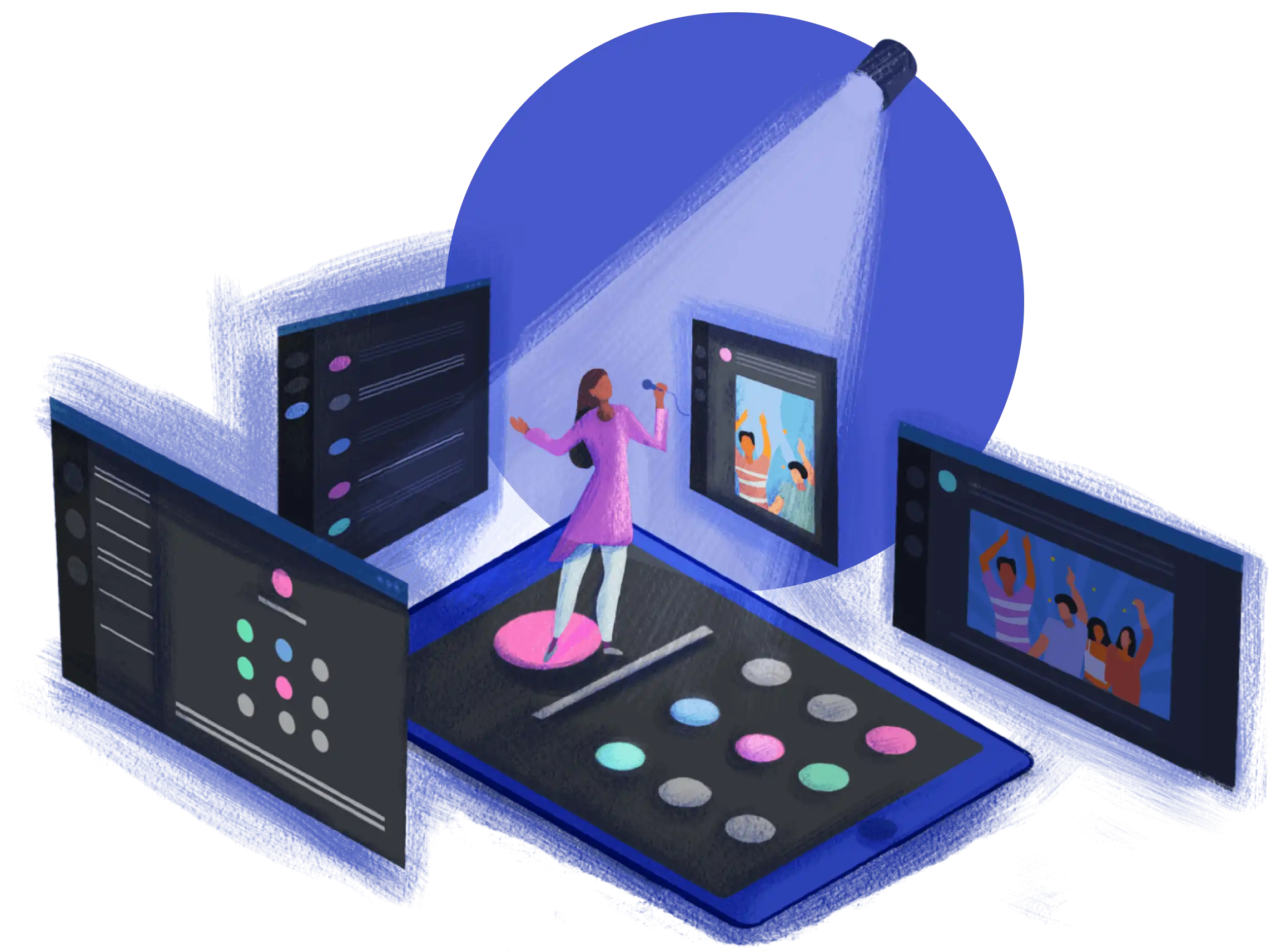
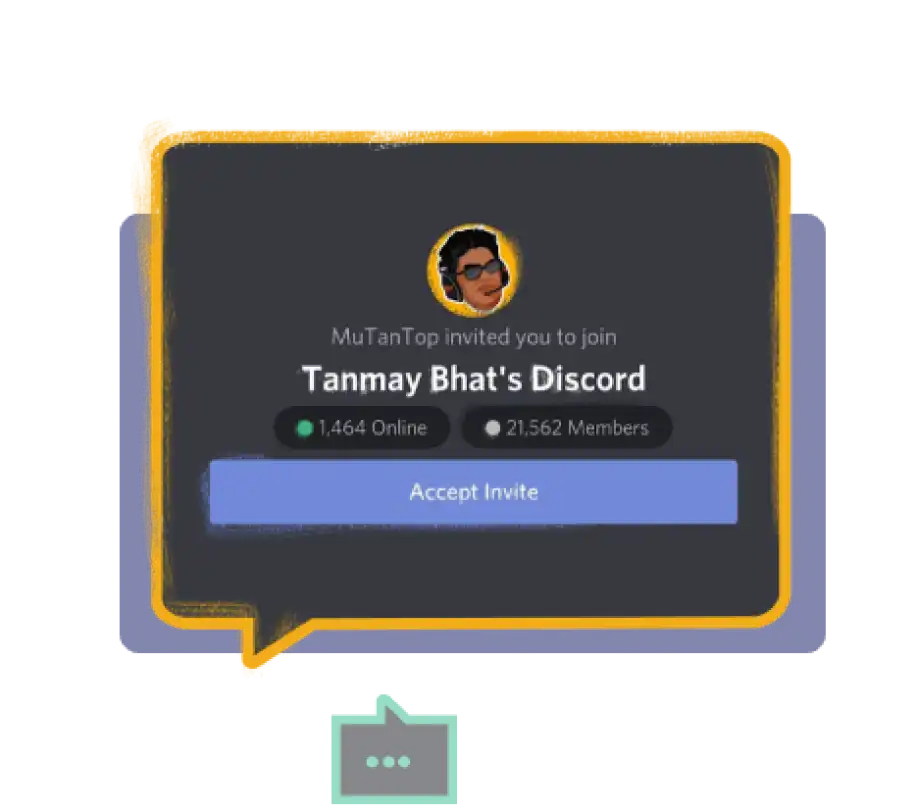
Earlier last year, comedians and creators such as Tanmay Bhat, Ajey Nagar aka CarryMinati, and Samay Raina set up their own Discord servers, starting the trend of artists building their own community. Bhat, Nagar and Raina frequently mentioned Discord servers on their YouTube videos as a place where their followers could hang out virtually with the artists and other followers. Their servers also encouraged talent shows, contests and a paid voice chat room that allowed users exclusive access to hang out virtually with these artists.
Soon, many other creators, including YouTuber Gaurav Taneja, magician Suhani Shah, music artist Dev Raiyani, spoken poet Yahya Bootwala and teen influencer Taneesha Mirwani, set up their Discord servers.
“The long-term goal of any content creator is to build and grow a community of like-minded people,” says Fardeen Shaikh, an admin of a popular meme page, Andheri West Shit Posting. “Discord is a place where you can build that community,” says Shaikh. His team has been encouraging their group of over 92,600 followers on Instagram to join their Discord server. Shaikh says that as their content got more social and political, their comments section filled up with people interacting. This was a signal for their team to move the conversation to a more streamlined format and Discord seemed like the winner in that department. Their Discord server is very active with people discussing studies, tests, struggles and Mumbai related information.
Discord peaked last year also when artists found themselves cut off from their fans by the prolonged ban on public gatherings worldwide. With venues shut and festivals cancelled, music artists had to adapt and find other channels to perform live.
For the 22-year-old singer and performer Devangi Chopra, Discord helped her network with other musicians and artists globally and perform virtually for global events. Chopra was recently approached by the Indian Students Association of Queen’s College in New York to perform online for their college festival.
“The turning point for Discord in India was around the time when the first lockdown was at its peak in mid-April 2020, and Indian content creators started building Discord communities,” says Siddhant Kashyap, founder of Snoopervisor, a server management team that helps content creators build and manage sustainable Discord communities.
Kashyap, who has set up servers for popular creators such as Nagral, Raiyani and Mirwani, says that apart from popular features like polls, voice channels and viewing party that allows users to chat while viewing a media, Discord as a platform is also designed to regulate conversations in a productive and streamlined manner. Professional artists often need people like Kashyap to help set up their servers with sub-channels and paid channels.
“On Discord, you can program bots to send notifications if a content creator has posted a new video or warn a user for spamming or using abusive language,” Kashyap says. Every server can have its own set of rules regarding what’s allowed and what can get you banned from the server. Apart from human volunteers who moderate these servers for more complex issues, the servers can be programmed for rote tasks like welcoming new users or taking down NSFW content.
Kashyap says that, at the end of the day, regulating content and conversations on Discord is the responsibility of the moderators of the servers. A moderator on many popular Indian servers where teens vent and talk about suicidal thoughts, Kashyap says that these conversations are always met with kindness and a nudge towards resources to help that person out.
The irony of the name chosen for Discord is too obvious to ignore for a platform that claims to foster communication between people. But then, a platform that allows a group of people to hold private conversations anonymously is bound to have its perils.
Since the platform doesn’t require users to verify their identities and allows them to make private servers that can’t be searched, it can also be a breeding ground for inappropriate content. In 2017 the company got in trouble when a group of alt-right supporters used Discord to organise a rally in Virginia that got violent, leaving one dead and 19 injured. Discord then banned several servers that promoted Nazi ideology. As a platform that encourages anonymity and is a popular hangout for teens and pre-teens, Discord can be a hunting ground for paedophiles and traffickers. There have been instances of predators exploiting teens they met through Discord.

However, teens who spend their entire day on Discord may not always find solace: While interacting on social media is a social activity, it may not give you a sense of a true connection at the end of the day, says Bhasin.
Discord by design is not flashy. It doesn’t have Instagram’s glossy filters or TikTok’s addictive user interface. Typically, it looks like an office messenger like Slack, only in dark mode. What Discord highlights, however, is the need for self-expression and finding your own tribe—needs that are highly unmet for teens due to the growing uncertainties that flooded their world in the past year and a half or so. How long will these teens lurk in these achromatic alleys behind cryptic pseudonyms for a semblance of normalcy? Who knows! For now, it’s a corner of the Internet where they feel they belong.




